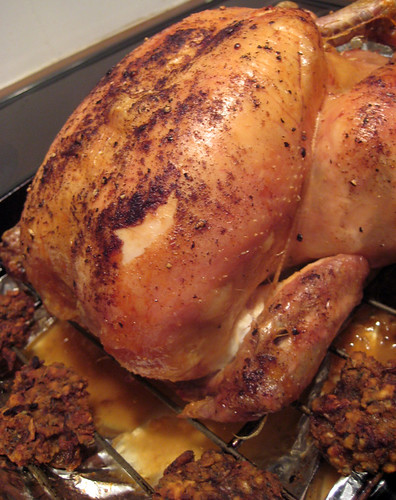
Now we progress from
Parenting Tips for a Blissful Pregnancy in the First Trimester to the last two trimesters of pregnancy.
At this point, you definitely look pregnant. Making yourself comfortable will ease your thoughts away from the burdens of your heavy load and will help you focus on the wonders of pregnancy. Here are some tips.

1. Have more pillows. If you can’t buy a body pillow, having several soft pillows within your reach will be very helpful. There will come a point when pillows will be your best friend in bed, in the couch or even in the car while traveling. Use them to support your back while sitting or to rest your tummy while lying on your side.
2.
Change your wardrobe. Insisting on wearing your old clothes will make you uncomfortable and look terrible. Boost your confidence by getting a few sets of maternity clothes. C

hoose wisely, base your choice on fit, style, design and fabric. Maternity clothes should be fashionable yet comfortable. Cotton clothing will answer concerns about perspiration.
Also, having some nice clothes to wear will inspire you to move about and regain your loosing self-esteem. Even your underwears need to be changed, at least one cup size bigger for your bra is expected. For your panties, wear something like a bikini style, which you can wear below your tummy or a large stretchable maternity type which you can pull over it.
3. Spend More to Worry Less. If you feel too tired to cook, have your food delivered. Don’t do the laundry if you can afford not to. Have it done by others. If you are blessed with reliable help to do these chores, good for you. The message is to spend more if you have to, such that you worry less on things that should be least in your concerns these days.
4. Adopt Good Posture and Wear Comfy Shoes. Adopting a good posture is important especially during pregnancy. This will reduce the risk of back injuries, minimize backaches, and provide more room for you growing baby as well.
a. When standing up, keep your shoulders back and drop them slightly, keep your back straight and lift your chest and ribs up. Tighten your stomach muscles and tuck your bottom in.
b. For a comfortable sit, find a chair that will support your back. You can also use a pillow for additional support.
c. When picking up objects, squat down, use your leg muscles and keep your back straight.
d. Roll onto your side before getting up from bed. Use your arms to help pull yourself up.

e. Avoid prolonged standing and sitting, and lifting heavy objects.
f. Wear comfy shoes or low-heeled sandals. Wearing high-heeled shoes when pregnant will put more strain on your leg muscles and back.
5. Exercise Regularly. For uncomplicated pregnancies, regular prenatal exercise offers a number of advantages. It promotes good posture; tones and strengthens muscles, particularly in the back, abdomen and pelvis; and improves blood circulation and psychological well-being of pregnant women. Exercise also induces the release of serotonin, a hormone responsible for eliciting the happy feeling.
There are varieties of antenatal exercises, but even a slow 15-minute walk in the park or your neighborhood will do. An early morning or before sunset walk to avoid the scorching heat of the sun is preferable. Avoid walking on congested and polluted streets.
6. Get the Right Nutrition. Eat a well balanced diet and take vitamins and mineral supplements. But remember to eat small frequent meals to prevent heartburn and indigestion. When you are well-nourished, pregnant or not, you feel and look vibrant. As a pregnant mom, know what you need and get it.
Folate and iron are very important supplements for pregnant women for the development of healthy red blood cells and for o

ptimum brain development of babies. Food rich in folate are red meat, green leafy vegetables and broccoli. If you do not get enough folate and iron, you may look pale and will easily feel fatigued and breathless.
Calcium requirements can be answered by drinking lots of milk and consuming milk products. But for those who cannot tolerate high milk intake, calcium supplement may be necessary. Deficiency in calcium may cause cramps in thigh and calf muscles.
7. Indulge on a Prenatal Massage. If you wish to have a prenatal massage, have it done by a professional or somebody knowledgeable on the restrictions of this practice. Enjoy this feel good indulgence…you deserve it. For all my pregnancies, in my 3rd trimester, it has become a nightly ritual for my husband to rub my legs with liniment for a sure good night sleep.
8. Alleviate Constipation and Prevent Hemorrhoids. It’s not uncommon for pregnant women to get hemorrhoids mainly because the growing uterus puts additional pressure on the veins around the rectum, making them swell. I know you don’t even want to think about it. Unfortunately it can happen, so I have to discuss ways of preventing it. If symptoms persist, consult your doctor.
a. Eat plenty of high fiber foods like oats, fruits and vegetables.
b. Drink plenty of water. This will also help replenish lost fluids during excessive perspiration as a consequence of hormonal changes and increased blood flow to the skin.
c. Don’t sit or stand for long periods of time.
d. If you are not ready to move your bowel, then don’t force it. Having high fiber intake and lots of water will do the trick and prevent you from becoming miserable…take your time and relax.
Basically, you only need to know the expected discomforts of pregnancy and find ways of alleviating them if you cannot totally prevent them from occurring. Bear in mind that in pregnancy, whatever you are going through is not your child’s or your husband’s fault, but yours to take willingly and cheerfully for you are sooo blessed. Again, my Congratulations! Have a Blissful Pregnancy!






































